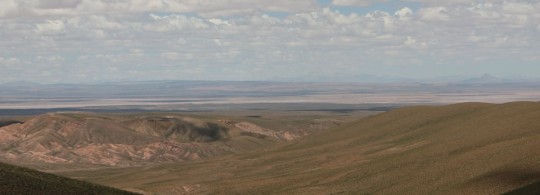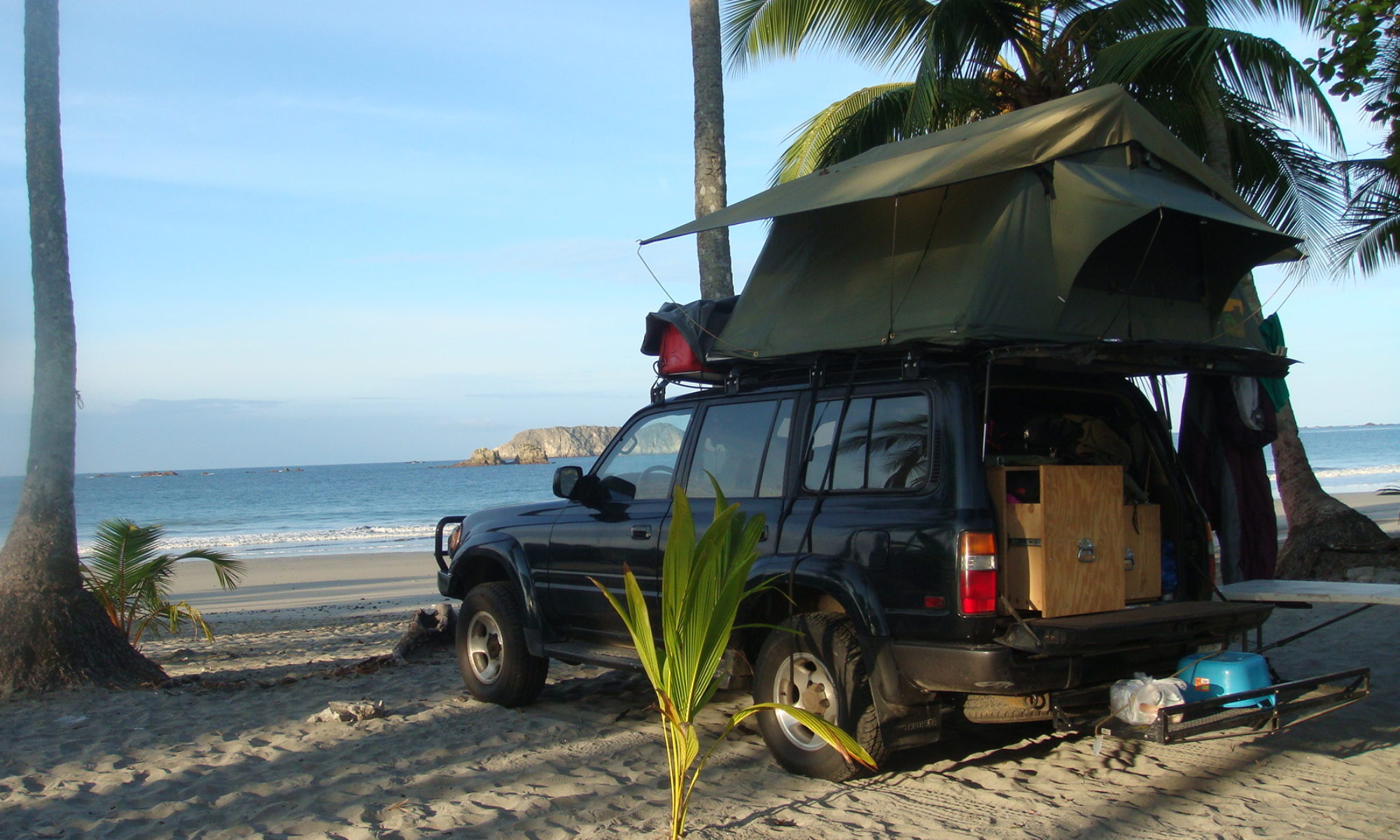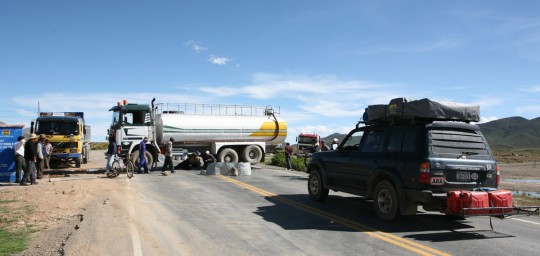
In the morning, we go get the car and we begin to drive out of the city. We eared previously it was the first day of a two-days nationwide blockade. Drivers of the whole country are upset. The government wants to pass a new law making it harder to drive under alcohol influence. They want to drive and drink, and they will block the whole country so everybody will know.
In the city, streets are emptied of cars, as most people know it’s better to not move today. Regardless, we come out of the valley where La Paz lays, and we drive south. Protesters did put sprayed a lot of rocks on the road, and we slalom between them. Soon enough, we found our first barrier, just outside of the city.
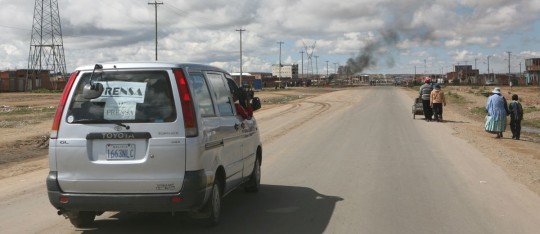
There, we meet with reporters from La Prensa, the biggest Bolivian newspaper. They are going south, and taking pictures and videos of the protests. Because they are press, protesters let them through the barrages.
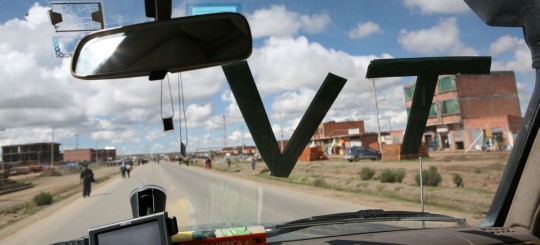
Soon enough, we are part of their convoy. With electrical tape, I mark the word TV on the windshield, and to all, we are American TV going through.
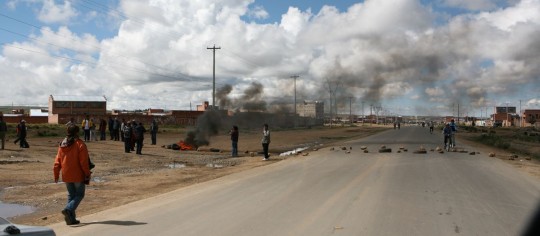
The day is long, and at every town, we have to negotiate our passage. But little by little, we advance south toward Potosi. We are back in the Pampa, and outside of towns, we can go fast in endless straight lines.
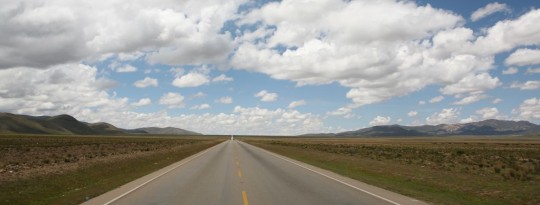
Because of cheap gas, I authorize myself to go above the speed limitation I usually follow.
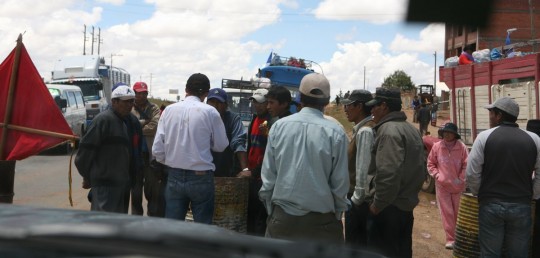
Sometimes, people would not let us go through, so we have to take dirt roads around towns, with scary river crossing once in a while.
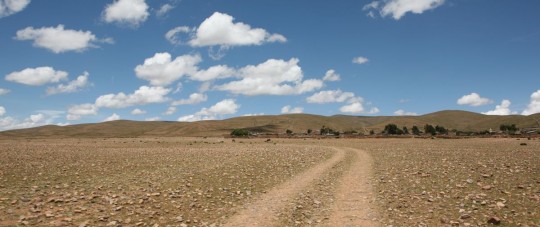
There’s a lot of salt in the surrounding landscape, which is a preview of one of our upcoming destination, the Uyuni Salar.
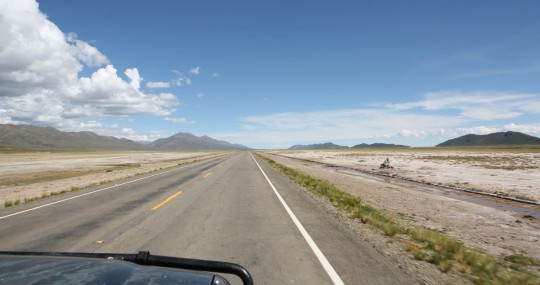
Finally, after spending an hour blocked at a last barrier, be go into the mountains where people could not care less – or don’t know about – what’s going on in the lowlands.
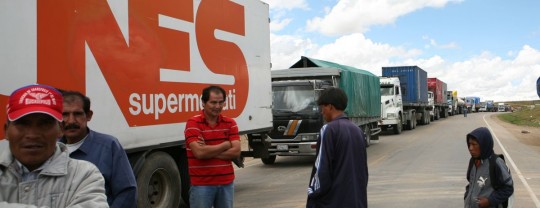
As sun goes down and night arrives, we continue on our way, wanting to make it to a stop Coen spoke to us about the previous day. Our goal is the site of hot springs north of Potosi where we knew we could camp.
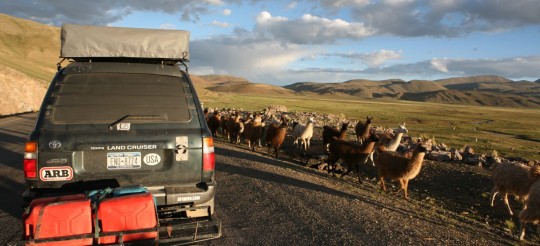
We arrived there around 8:30 p.m., and a lady let us go in for few dollars. We camp on a basketball court and go to sleep, tired after the 500 km (310 mi.) we were able to put behind us today.
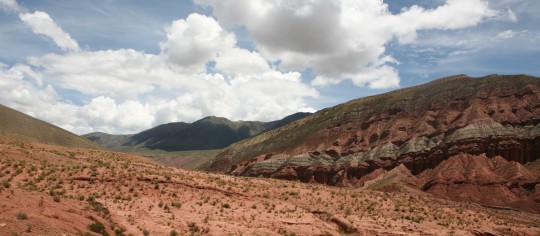
In the morning, Nadia takes advantage of the hot springs, while I work on photos and inspect the truck. We drive the 20 km (12 mi.) to Potosi and go to the market there. We have a lot of desert to cover in the next few days, so we need to buy plenty of food and water to be able to make it.
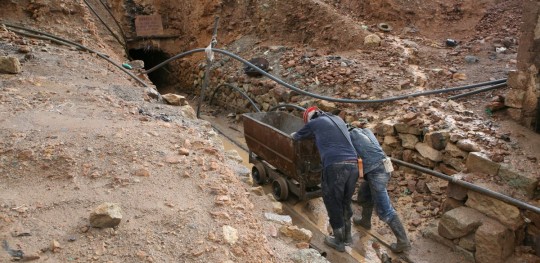
In the afternoon, we go visit the infamous Cerro Rico mines, where during the colonial period, as many as eight millions Indians and Africans died from the terrible work conditions.
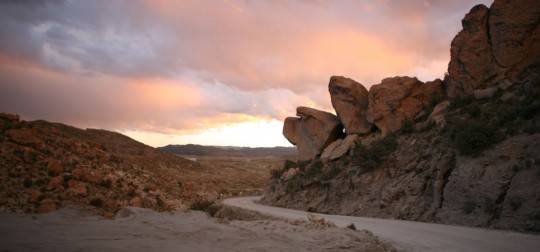
The next step is the Uyuni Salar. We leave Potosi late in the day, but have read that there is a new road to Uyuni. Well, it is true that there’s a new road, but only for the few first miles. After that, it is 250 km (155 mi.) of dirt road.
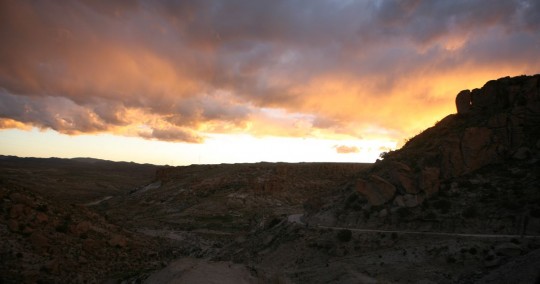
But we are not disappointed. The road is beautiful, and crosses surreal landscapes. At the end, after nightfall, we stopped on the main plaza of a town where road workers sleep at night. They are very nice, and let us stay close to one of their dormitories, protected from the wind.
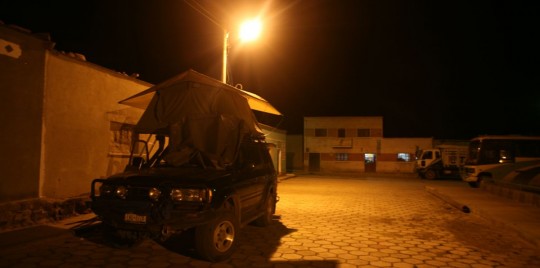
In the morning, we resume our journey toward Uyuni. After two hours, when it gets warmer, we stop to wash the dirt out of us. Soon we are back on the dirt road, for the long stretch to our destination.
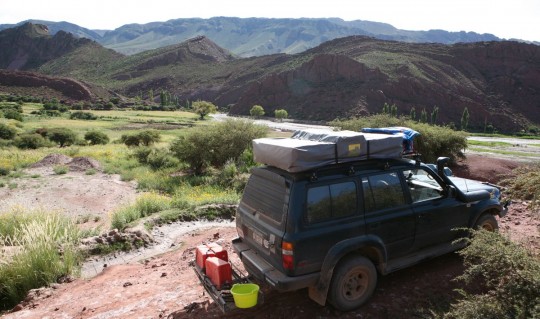
As we advance, the road gets worst. Dust and sand are everywhere in the truck. We drink plenty of water but still are as dry as the desert itself.
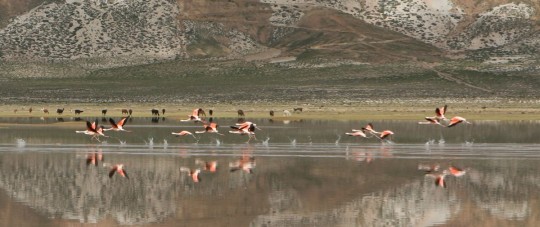
But at midday, we pass a last mountain, and get a view of Bolivia largest saltpan. The huge Salar de Uyuni was in front of us.
